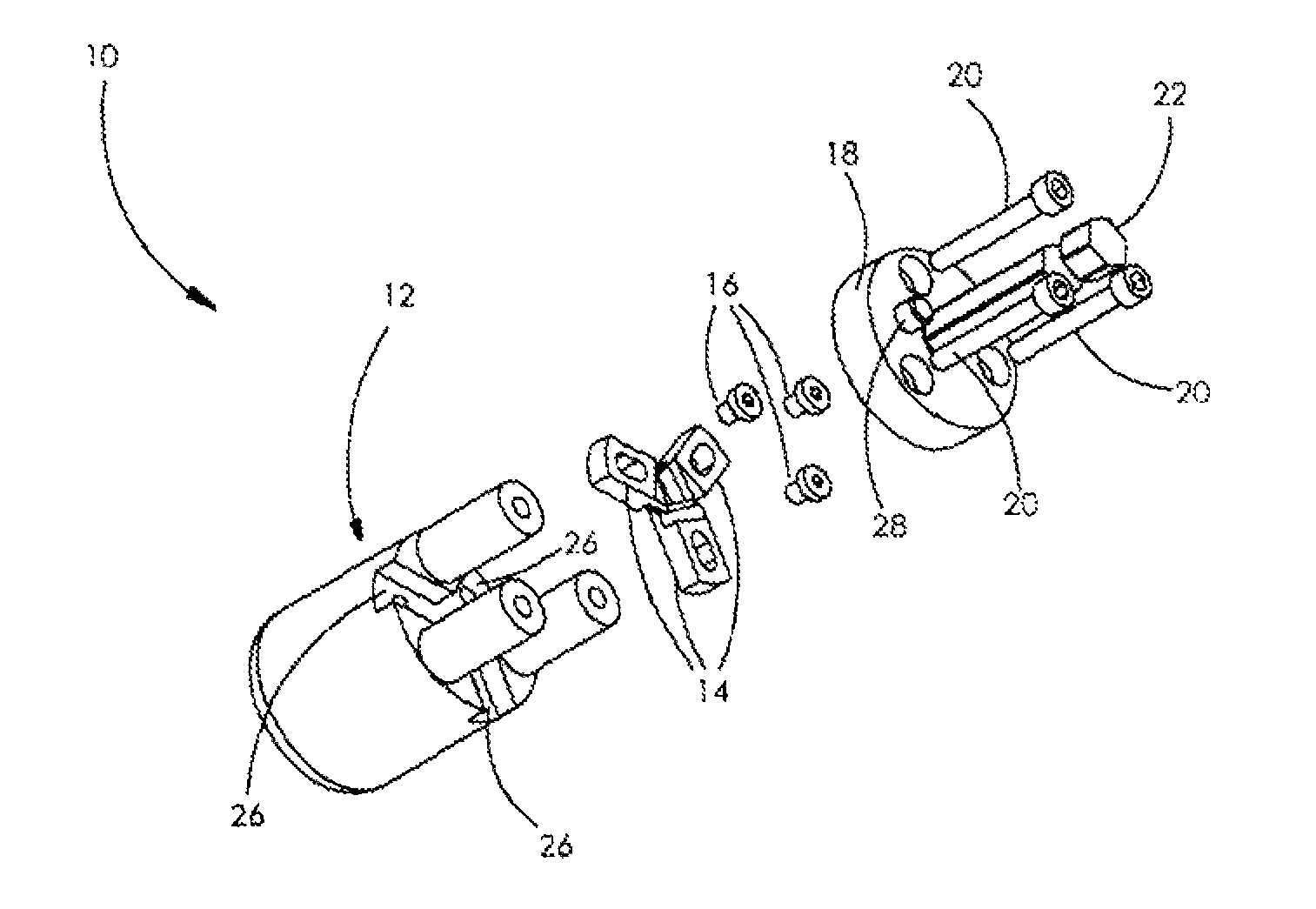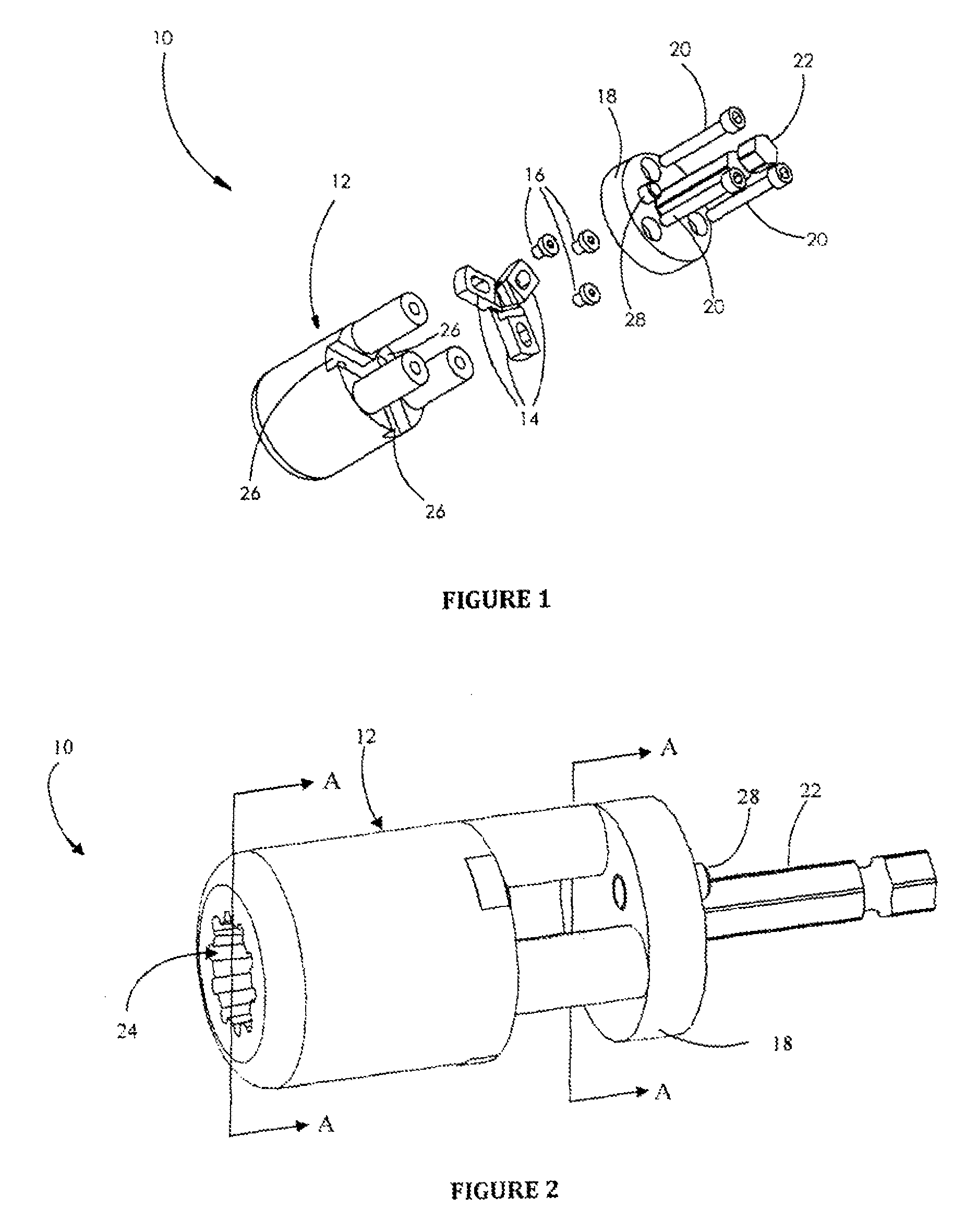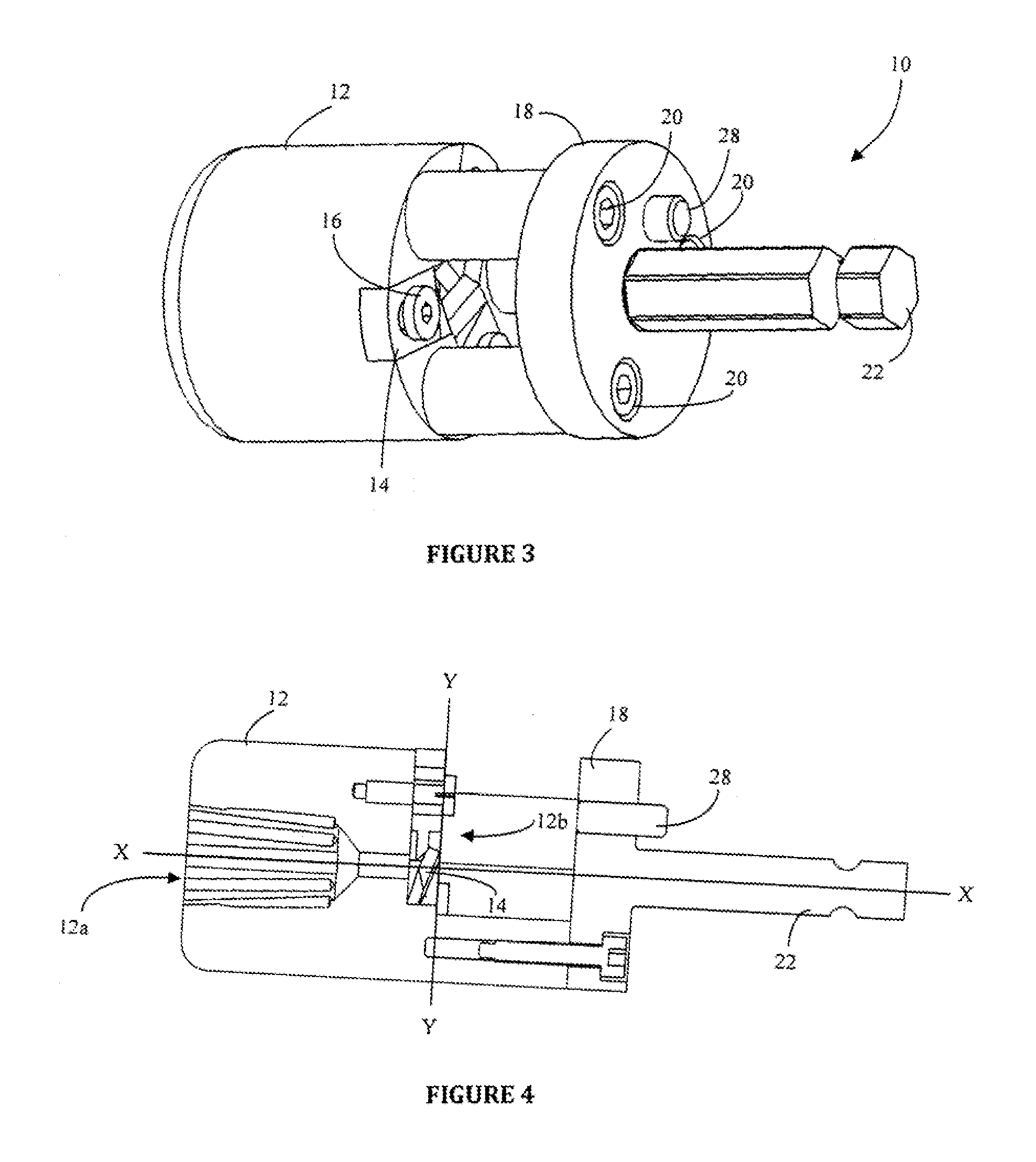Electrical wire tool
a wire tool and electric wire technology, applied in the field of tools, can solve the problems of injury to users, still is a time-consuming and labor-intensive practice, and is still relatively time-consuming and hazardous to perform electrical wire work
- Summary
- Abstract
- Description
- Claims
- Application Information
AI Technical Summary
Benefits of technology
Problems solved by technology
Method used
Image
Examples
Embodiment Construction
[0015]The following description of the preferred embodiments of the invention is not intended to limit the invention to this preferred embodiments, but rather to enable any person skilled in the art of electrical tools to make and use this invention.
[0016]As shown in FIGS. 1 through 4, an apparatus 10 of the preferred embodiment can generally include a housing 12 defining a wire nut receiver 24 on a first end 12a and a stripper blade receiver 26 on an opposite end 12b. The wire nut receiver 24 is adapted to engage with a wire nut (not shown) usable by one of skill in the art of electronics for fastening a wire nut to one or more electrical wires. In a variation of the apparatus 10 of the preferred embodiment, the wire nut receiver 24 can be configured to engage any of a standard wire nut, a wing nut, or a grounding wire nut. The wire nut receiver 24 portion of the housing 12 can further define a hollow or channel though which one or more wires can be placed to engage with one or mor...
PUM
 Login to View More
Login to View More Abstract
Description
Claims
Application Information
 Login to View More
Login to View More - R&D
- Intellectual Property
- Life Sciences
- Materials
- Tech Scout
- Unparalleled Data Quality
- Higher Quality Content
- 60% Fewer Hallucinations
Browse by: Latest US Patents, China's latest patents, Technical Efficacy Thesaurus, Application Domain, Technology Topic, Popular Technical Reports.
© 2025 PatSnap. All rights reserved.Legal|Privacy policy|Modern Slavery Act Transparency Statement|Sitemap|About US| Contact US: help@patsnap.com



